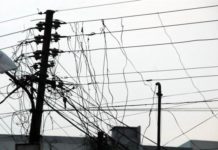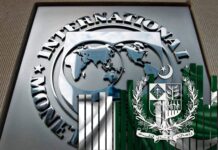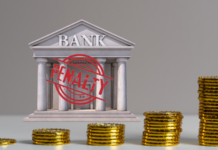ISLAMABAD
The finance ministry on Wednesday clarified that the PML-N government only obtained loans of $ 10.3 billion during the last four years in office as against the media claims of obtaining $ 35 billion in external debt.
It denied taking $ 10.1 billion loans during the last year. However, it is important to mention that the figures were disclosed in the data presented to the Senate standing committee on finance, last week.
A statement issued by the finance ministry said a section of media has carried reports that the present government in four years period has added a whopping $ 35 billion to external debt of the country. The reports said that Pakistan’s total external debt has reached $ 79.2 billion by June 2017 and that loans amounting to $10.1 billion were obtained in a single year during the last year.
The reports have highlighted the sharp increase in debt servicing during 2016-17 which would increase to $7 billion. According to these reports, debt servicing was $5.4 billion in 2014-15, $5.31 billion in 2015-16, and would increase to $7 billion during 2016-17. These reports also state increase in borrowing cost to the government.
It is clarified that the debt numbers quoted in these reports are based on incorrect information. The figure of $79.2 billion is a mere projection and includes private sector external debt and liabilities as well. The actual external public debt as of end-March 2017 is $58.4 billion and not $79.2 billion.
The said news reports have tried to sensationalise the debt situation by stating that $35 billion has been added to Pakistan’s debt during the last four years. This is grossly wrong and misleading. The nominal increase in external public debt as of end-March 2017 is only $10.3 billion averaging at $2.57 billion per annum. The reports have also incorrectly stated that $10 billion loans were taken during 2016-17. In fact, the net increase in external public debt in 2016-17 till end-March 2017 was only $0.7 billion, added the ministry’s clarification.
The media reports are also totally misleading with regard to external debt servicing obligations of the government of Pakistan. The actual external public debt servicing stood at $4.5 billion in 2014-15, $4.3 billion in 2015-16, and is projected to be $5.5 billion by end-June 2017 as against US$7 billion being claimed in the media reports, added the ministry representatives.
The average cost of the external loan portfolio as of end-March 2017 is 2.15 per cent per annum which is significantly lower than the cost of domestic financing. Thus the cost of external debt is not only economical but also dominated by long term funding.
It is highlighted that external debt sustainability has increased substantially during the last four years supported by a prudent debt management policy and macroeconomic stability. Debt sustainability analysis carried out recently by an international development partner shows that external debt would remain on a downward trend over the medium term staying well below the risk assessment benchmarks, the clarification furthered.
As added by the ministry of finance, out of total public debt, external debt constitutes only 29 per cent as of end-March 2017. Within total external debt, the largest component is multilateral and bilateral concessional debt, which constitutes 87 per cent. Loans from multilateral and bilateral development partners are primarily aimed at removing structural bottlenecks in the economy.
The clarification further informed that these loans, being concessional and long term, strengthen the debt repayment capacity of the country. Besides, these loans support the implementation of structural reforms in the area of energy, taxation, doing business, trade facilitation, education and public sector enterprises. These loans are dominated by long term maturities and, therefore, do not add to debt payment vulnerabilities. Furthermore, these concessional external loans have been used to retire relatively more expensive debt.
It would, therefore, be prudent that due caution is exercised while reporting on key indicators of the economy as any misreporting based on incorrect numbers can potentially damage perceptions with regard to the positive outlook of the economy as well as investors’ confidence.
This is necessary to protect the hard earned economic gains achieved over the last four years and to carry the growth trajectory of the economy forward.
























